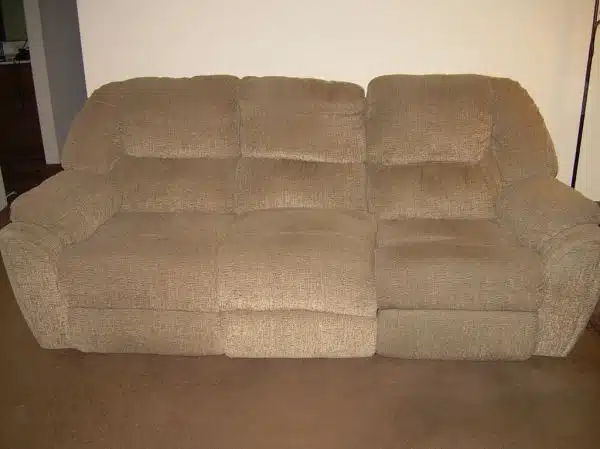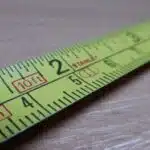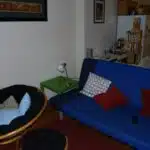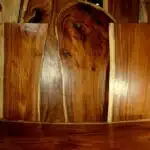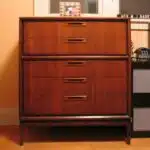As a furniture design expert, it is important to know how to properly measure a sofa. Measuring a sofa may seem like a simple task, but it can be quite complex and requires attention to detail. Accurate measurements are crucial in ensuring that the sofa fits perfectly into its intended space, and that it is comfortable for its users.
When measuring a sofa, there are several factors to consider such as the dimensions of the room, the style of the sofa, and the desired seating capacity. It is also important to take note of any existing furniture or fixtures in the room that may affect the placement of the sofa. In this article, we will guide you through the proper steps on how to accurately measure a sofa while keeping in mind these factors. By following these guidelines, you will be able to find your ideal sofa that fits your space and fulfills your seating needs.
Understanding The Importance Of Accurate Sofa Measurements
Accurate measurements are essential when it comes to purchasing furniture, especially a sofa. Without precise dimensions, you run the risk of buying a piece that is too big or too small for your space. The importance of accurate measurements cannot be overstated. It is crucial to take every measurement into account to ensure that the sofa fits perfectly in your room.
Unfortunately, many people make common mistakes when measuring their sofas. One of the most frequent errors is not taking into account the depth of the sofa. This can lead to an uncomfortable seating experience and even cause back problems in some cases. Another mistake is not measuring the doorways or hallways through which the sofa will need to pass during delivery. This can result in a situation where your new purchase won’t fit through your front door!
To avoid these pitfalls and ensure that you get a sofa that fits perfectly in your space, it’s important to take accurate measurements. Start by measuring the length, width, and depth of your current sofa or the area where you plan to place it. Make sure to measure any obstacles such as stairwells and doorways that might impede delivery. By taking these steps, you’ll be well on your way to finding a sofa that fits perfectly in your home.
Gathering The Necessary Tools For Measuring
To ensure an accurate measurement, it is necessary to gather the necessary tools before measuring a sofa. Although it may seem simple, measuring a sofa can be tricky if you don’t have the right tools. The most important tool for measuring a sofa is a measuring tape.
When gathering your tools, consider furniture placement in the room where the sofa will be located. Ensure there is enough space to fit your desired sofa and that it doesn’t obstruct any walkways or doorways. Take note of any other furniture pieces in the room and how they may affect the positioning of your sofa.
In addition to a measuring tape, here are some other valuable tools that you may want to consider when measuring your sofa:
- A pen and paper to record measurements
- A level to check if the floor is even
- A friend or family member to help with moving and positioning the sofa
- A camera or smartphone to take photos of the room layout for reference
- Blue painter’s tape can also be useful when marking out where your sofa will sit in relation to other furniture pieces.
Before we move onto measuring the length of the sofa, let’s review why gathering all necessary tools beforehand is crucial. Not only does this save time during the process, but it also ensures greater accuracy which means less potential mistakes down the line. With all our tools prepared, let’s proceed with taking measurements for our desired sofa placement.
Measuring The Length Of The Sofa
The length of a sofa is an important measurement that every furniture design expert must take into account. Symbolically, the length represents the foundation of a sofa’s functionality and comfort. A sofa that is too short will not provide enough space for seating and lying down, while one that is too long may overpower the room and leave little space for other furniture.
Common mistakes in measuring the length of a sofa include not taking into account any curves or angled designs. This can result in inaccurate measurements that may cause problems when it comes to fitting the sofa into a specific area or matching it with other furniture pieces. To avoid this issue, experts recommend measuring from the furthest points on either end of the sofa, including any protruding features such as armrests.
For curved sofas, measuring the length can be trickier than with straight ones. Experts suggest using a flexible tape measure to follow the contours of the curve accurately. It is also essential to measure both sides of the curve and take note of any differences in length. Following these tips for measuring curved sofas will ensure accurate measurements and prevent any issues when placing them in a room or designing around them.
Moving on to measuring the width of the sofa, it is equally important to consider this measurement as it determines how many people can sit comfortably on it at once. By avoiding common mistakes in measurement and following expert tips for measuring curved sofas, you can ensure your sofa fits perfectly into your room’s design while providing maximum comfort and functionality for all who use it.
Measuring The Width Of The Sofa
Obtaining accurate measurements of a sofa is crucial to ensure that it fits perfectly in your living space. Measuring sofa length, height and depth accurately is essential, but measuring the width is equally important. The width of the sofa refers to the distance between the two arms of the sofa. To measure it correctly, you will need a measuring tape and a second person to assist you.
When measuring the width of a sofa, it is vital to place the tape measure at the widest point of the furniture piece. If your sofa has curved or angled arms, ensure that you take measurements from their outermost points. For sofas with straight arms, measure from one end of the armrest to the other end. If your couch has loose cushions, remove them for an accurate measurement.
In tight spaces where there may not be enough room for a traditional measuring tape, consider using a laser measurement tool instead. These gadgets are highly accurate and can help you obtain precise measurements without requiring much space. Simply point and shoot at two opposite ends of your sofa, and let technology do its job!
Measuring The Height Of The Sofa
Measuring the height of a sofa is a crucial step in choosing furniture that is both comfortable and aesthetically pleasing. While the width of a sofa determines how many people can sit on it, the height determines how comfortable it will be for those who do sit on it. When measuring the height of a sofa, there are a few factors to consider.
Firstly, consider the overall style and design of your living space. If you have high ceilings, for example, you may want to choose a taller sofa so that it doesn’t get lost in the space. Conversely, if your ceiling is lower or your room is smaller, a lower sofa may be more appropriate. Secondly, think about how you will be using your sofa. If you plan to use it primarily for lounging and relaxation, a lower seat height may be more comfortable. However, if you plan to use it for entertaining guests or as additional seating in a formal living room setting, a higher seat height may be more appropriate.
In addition to these considerations, there are also some general guidelines to keep in mind when measuring the height of your sofa. For example:
- Measure from the floor to the highest point on the back of the sofa.
- Make sure to account for any cushions or pillows that may add additional height.
- Consider the proportions of other furniture pieces in the room when selecting your sofa’s height.
- Always test out different options before making your final decision.
Choosing furniture can be an exciting process, but it can also feel overwhelming at times. By taking into account factors such as style and intended use when measuring the height of your sofa, you can ensure that you select a piece that both looks great and feels comfortable to sit on. Decorating with sofas should never feel like an afterthought; instead, take time to carefully measure and choose pieces that will serve both form and function within your home’s aesthetic.
When moving on to measuring the seat height of the sofa, there are a few additional considerations to keep in mind.
Measuring The Seat Height Of The Sofa
To ensure maximum comfort and support, it is crucial to measure the seat height of your sofa accurately. Adjusting seat height can make all the difference in how comfortable your sofa feels, particularly if you have any physical limitations. To begin, take a measuring tape and measure from the floor to the top of the seat cushion. This measurement will give you a clear idea of how high off the ground your sofa is.
Once you have determined your seat height, it’s time to choose appropriate cushions. Cushions can significantly impact the feel and comfort level of your sofa. For example, if you prefer a firmer seating experience, opt for cushions with higher density foam. On the other hand, if you prefer something softer or more plush, opt for down-filled cushions. The goal should be to find cushions that complement both your body type and the overall style of your sofa.
Overall, adjusting seat height and choosing appropriate cushions are critical components in achieving optimal comfort in your sofa. By taking these steps into consideration, you can rest assured knowing that not only will your furniture look great but also provide maximum relaxation after a long day’s work. In the next section, we’ll be discussing how to measure the seat depth of your sofa so that you can continue crafting an ideal lounging space for yourself or guests.
Measuring The Seat Depth Of The Sofa
Measuring the seat depth of a sofa is an essential step in determining if it’s the right fit for your space and comfort needs. Seat depth refers to the distance from the front edge of the cushion to the backrest, and it plays a significant role in how comfortable you will be when sitting on the sofa. To measure the seat depth, you will need a measuring tape or other measuring tape alternatives.
Common seat depth measurements in different types of sofas vary significantly. Standard sofas have a seat depth of around 21 to 24 inches, while loveseats have a shallower seat depth of approximately 18 to 20 inches. Sectional sofas typically have deeper seats, ranging from 22 to 28 inches, depending on their design. Reclining sofas usually come with an adjustable seat depth that can go up to 30 inches or more.
To measure the seat depth accurately, place your measuring tape or alternative at the backrest’s base and extend it towards the front edge of the cushion, taking care not to include any gaps between cushions. Note down this measurement as it will help you determine if a particular sofa is suitable for your comfort needs. Remember that if you prefer a comfier experience, opt for a deeper seat depth than what’s standard.
Before moving on to measuring arm height, it’s crucial to ensure that you’ve recorded accurate measurements for your sofa’s seat depth. With these measurements in hand, you’ll be one step closer to finding your ideal seating solution.
Measuring The Arm Height Of The Sofa
Measuring the arm height of the sofa is an important step in ensuring that you have a comfortable seating experience. The armrests of a sofa play a crucial role in providing support to your arms and shoulders, which can prevent strain and discomfort. Additionally, they can also enhance the aesthetic appeal of the piece of furniture, making it look more elegant and sophisticated.
When measuring the arm height of a sofa, it is important to take into account your personal preferences as well as the overall design of the room. A good rule of thumb is to ensure that the armrests are at least level with or slightly higher than your hips when you sit down on the sofa. This will provide ample support for your arms and shoulders while also allowing you to easily get up from the seat.
Another factor to consider when choosing a sofa is finding the right fabric. The material that covers your sofa can greatly impact its durability, comfort, and overall appearance. When selecting a fabric, it is important to consider factors such as color, texture, and maintenance requirements. For instance, if you have young children or pets who frequently use the furniture, then you may want to choose a durable and easy-to-clean material like leather or microfiber.
Next up: Measuring the back height of the sofa.
Measuring The Back Height Of The Sofa
How do you measure the back height of your sofa? This is a common question that arises when purchasing a new sofa or replacing an old one. The back height of a sofa is an important factor to consider, as it determines the comfort level and overall visual appeal of the piece.
One common mistake people make when measuring the back height of their sofa is not accounting for different styles. Different sofa designs have varying degrees of curvature in the back, which can affect the measurement. For example, a sectional sofa may have a higher back than a traditional loveseat due to its multi-piece design. It’s essential to take into account the style and design of your sofa to get an accurate measurement.
Adjusting for different styles requires some attention to detail. You’ll need to identify where the highest point on the back is and measure from there down to either the seat cushion or bottom frame, depending on how far down you want your measurement to go. Additionally, if you plan on using decorative pillows or cushions on your sofa, it’s essential to factor those into your measurements as well. These small details can make all the difference in ensuring that your new sofa fits perfectly in your space.
Now that you know how to measure the back height of your sofa accurately, it’s time to move onto measuring for clearance space. This step is just as crucial as measuring for size and will ensure that your new piece fits seamlessly into your home.
Measuring For Clearance Space
When it comes to buying a new sofa, measuring for clearance space is an important step in ensuring a smooth delivery process. Clearance space refers to the area around the sofa where it can be maneuvered into place without obstacles or damage to existing furniture. It is crucial to measure this space accurately before making any purchase.
To begin measuring for clearance space, start by measuring the dimensions of the sofa you are interested in. Take note of its length, width, and height as well as the dimensions of any additional features such as armrests or recliners. Next, measure the width and height of all doorways, hallways, and staircases that the sofa will need to pass through during delivery. Be sure to account for any tight corners or narrow spaces.
Once you have all of these measurements, subtract the total width and height of the sofa from the smallest doorway or hallway measurement. This will give you a clear idea of whether or not your desired sofa will fit through each entranceway without issue. Remember to always measure twice and double-check your calculations before making a purchase. In our next section, we will discuss how to take note of obstacles and existing furniture when measuring for clearance space.
Taking Note Of Obstacles And Existing Furniture
The process of measuring a sofa may seem simple, but it can become complicated when considering existing furniture and obstacles in the room. It is essential to take note of these factors to ensure that the sofa fits comfortably and does not disrupt the overall furniture arrangement. Obstacle placement plays a significant role in determining where the sofa should be placed in the room.
Before measuring the space for your new sofa, take note of any obstacles that might hinder its placement. These could include windows, doors, radiators, or even electrical outlets. Ensure that you measure around these obstacles and make allowances for them so that the sofa is not too close to them. An improperly placed sofa can disrupt the overall flow of the room and cause inconvenience when moving around.
Furniture arrangement also plays a crucial role in determining where the new sofa will fit into space. If other furniture pieces are already present in the room, consider their placement before purchasing a new sofa. Look at how they relate to each other and determine how much space will be needed between them and your new couch. Taking note of obstacles and existing furniture before measuring for your new sofa ensures a comfortable living space with proper furniture arrangements.
Understanding the style of your new sofa is another vital step in ensuring that it fits perfectly into your living space. With its unique design features, you must determine which style would complement your existing decor while still providing comfort and functionality.
Understanding The Style Of The Sofa
As a furniture design expert, understanding the style of a sofa is crucial in choosing one that fits your needs and preferences. There are various styles available in the market, ranging from traditional to modern designs. The style of the sofa can be determined by examining its overall shape, armrests, legs, and backrests.
One important aspect to consider when selecting a sofa is the fabric options. Sofas come in various materials such as leather, velvet, cotton, and linen. Each material has its unique characteristics that can influence the overall look and feel of your living space. Leather sofas provide an elegant and sophisticated appearance, while cotton or linen fabrics offer a more relaxed and cozy vibe.
Another factor to consider when selecting a sofa is color palettes. Neutral colors like beige or gray are versatile options that can blend well with any interior design theme. On the other hand, bold colors such as red or blue can add personality and character to your living space. It’s important to choose a color palette that complements your existing decor and reflects your personal taste.
- To make sure you are choosing the right style for your home décor needs:
- Look for inspiration from magazines or online platforms for ideas on different styles.
- Consider how often you will use the sofa before making a purchase.
- Take into account whether pets or children will be using it frequently.
- Keep in mind any particular architectural features of your home such as high ceilings or large windows.
Understanding the style of a sofa is an essential step towards finding one that suits both your aesthetic preferences and practical requirements. By considering fabric options and color palettes along with other factors like seating capacity, you can ensure that you select a comfortable and stylish piece of furniture that enhances your living space.
Considering The Seating Capacity
After understanding the style of the sofa, it’s important to consider the seating capacity. To do so, one must think about the intended use of the sofa and how many people will be using it regularly. Will it be used for lounging or entertaining guests? These factors will influence the size of the sofa and ultimately its seating capacity.
Maximizing space is also a crucial factor in choosing a sofa. It’s important to measure the area where the sofa will be placed to ensure there is enough room for movement and other furniture pieces. A common mistake is choosing a sofa that is too large for a room, making it feel cramped and uncomfortable. On the other hand, choosing a smaller sofa for a larger room can make it feel empty and uninviting.
Choosing the right fabric is another consideration when measuring for a custom sofa. The material should suit your lifestyle needs, such as durability if you have children or pets. Additionally, consider factors such as color and texture to ensure it complements your existing décor.
Transitioning into measuring for custom sofas, accurate measurements are crucial in ensuring a perfect fit. It’s essential to measure not only the length and width but also the depth and height of any doorways or hallways leading to where the sofa will be placed. This information will help determine if any modifications need to be made to accommodate delivery and installation.
Measuring For Custom Sofas
Proper measurement is crucial when purchasing a custom sofa. Before you begin, ensure that you have the right tools for the job, including a tape measure and a pencil and paper to record your measurements. Begin by measuring the width of your space, taking note of any obstacles such as doors or windows that may affect the placement of your sofa.
Next, measure the depth of your space from back to front, keeping in mind any other furniture or décor that may be in the room. It is important to leave enough room for foot traffic and easy movement around the area. Take note of any architectural features such as fireplaces or built-in shelving that may affect how much space you have available.
Choosing fabric and selecting design are also important considerations when measuring for a custom sofa. Consider factors such as durability, texture, and color when choosing fabric. When selecting design, consider how it will complement existing furniture and décor in your home. A professional furniture designer can help guide you through these decisions to ensure that your custom sofa meets all of your needs.
With these measurements and considerations in mind, finalizing your sofa measurements can be a breeze. By following these steps carefully and consulting with an expert furniture designer if needed, you can create a one-of-a-kind custom sofa that perfectly fits your space and style.
Finalizing Your Sofa Measurements
It’s always amusing to see how often people underestimate the importance of measuring a sofa. Choosing the right sofa is not only a matter of style and comfort, but also one of practicality and functionality. In order to ensure that your new piece of furniture fits perfectly into your living space, you need to have accurate measurements.
Common Measurement Mistakes can happen when using a tape measure. It’s easy to get distracted by other things in the room or to miscalculate due to angles or curves. One way to avoid these mistakes is to have someone else assist you with the measuring process so that they can help keep you focused on the task at hand.
To make sure you get an accurate measurement, it’s important to follow some basic guidelines:
- Use a tape measure that is at least 25 feet long
- Measure from the floor up to determine height
- Measure from armrest to armrest for width
- Take note of any additional features like recliners or chaise lounges
By following these guidelines and avoiding common measurement mistakes, you’ll be well on your way to choosing the right sofa for your home. Remember, taking the time to properly measure will save you both time and money in the long run.
Conclusion
Accurate measurements are vital when purchasing a sofa, as it ensures that it fits perfectly in your home and accommodates all of your needs. To properly measure a sofa, you will need to gather the necessary tools and follow a few simple steps. These include measuring the length, width, and height of the sofa while taking into consideration its style and seating capacity.
It is also important to note that if you are looking for a custom sofa, precise measurements are even more crucial. By following these steps and finalizing your measurements, you can confidently purchase a sofa that will fit seamlessly into your space and provide optimal comfort.
As furniture design experts, we understand the importance of proper measurements when selecting a sofa. A poorly fitting piece can detract from the overall aesthetic of the room, while also being uncomfortable to use. Don’t leave this vital step to chance – take the time to gather accurate measurements before making your purchase.
When it comes to finding the perfect sofa for your home, every detail matters. By ensuring that you have accurately measured your space and selected a style that suits your needs, you can create an inviting atmosphere that is both stylish and functional. Remember: precision is key when it comes to designing a beautiful living space!
Image Credits
- “Sofa” by Ryan Finnie (featured)

